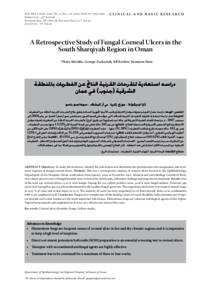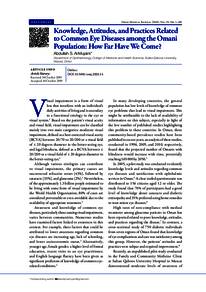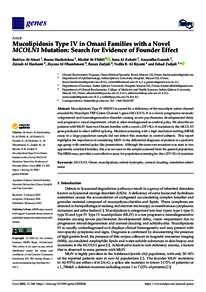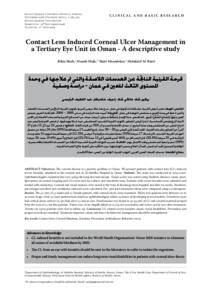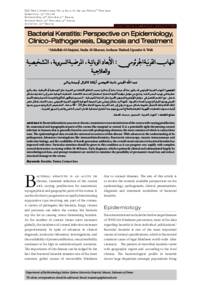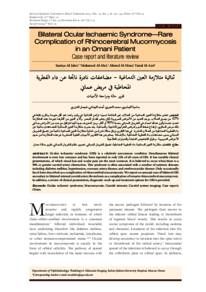Document
A Retrospective study of fungal corneal ulcers in the South Sharqiyah Region in Oman.
Contributors
Other titles
دراسة استعادية لتقرحات القرنية الناتج عن الفطريات بالمنطقة الشرقية (جنوب) في عمان
Publisher
College of Medicine, Sultan Qaboos University.
Gregorian
2009-04
Language
English
English abstract
Objectives: To study the incidence, identify the risk factors and determine the predominant microorganisms and treatment regimen of fungal corneal ulcers. Methods: This was a retrospective analysis of corneal ulcers treated in the Ophthalmology Department of Sur Hospital, Oman, undertaken from January 2004 to December 2007. Medical and microbiology records of thirty two culture proven cases of fungal keratitis were reviewed for risk factors, laboratory findings and response to treatment. Results: Out of the total 242 corneal ulcers, 13.22 % were fungal. Among the 102 culture positive cases, 31.38 % were fungal isolates. Fusarium spp (50%) and Aspergillus spp (34.4%) predominated in the hyaline fungal spectrum. The important risk factors were topical steroid usage in 31.25 % of cases and ocular injury in 25 %. The majority of cases (90.62%) responded to 2% ketoconazole alone or in combination with 0.15% amphotericin B. Conclusion: Fungal ulcer remains one of the leading causes of visual disability. Indiscriminate use of topical steroids and ocular trauma are the most important risk factors. Filamentous fungi are common aetiological agents in this region. Topical ketoconazole and amphotericin B were very effective for most of the cases.
Member of
Resource URL
Citation
Idiculla, Thara, Zachariah, George, Keshav, B. R. , & Basu, Somansu. (2009). A Retrospective Study of Fungal Corneal Ulcers in the South Sharqiyah Region in Oman. Sultan Qaboos University Medical Journal, 9 (1), 59–62.
Arabic abstract
الهدف: دراسة معدل الحدوث ومعرفة عوامل الاختطار وتحديد الأحياء المجهرية السائدة وطرق علاج التقرحات القرنية الناتجة عن الفطريات. الطريقة هذه دراسة استعادية تحليلية للتقرحات القرنية للحالات التي عولجت في قسم العيون بمستشفى صور (عمان) للفترة من يناير 2004 إلى ديسمبر 2007 . تم مراجعة الملفات الطبية لاثنين وثلاثين حالة ثبت إصابتها ( عن طريق الزرع بالتقرحات القرنية الناتجة عن الفطريات لمعرفة عوامل الاختطار ونتائج الفحوص المختبرية والاستجابة للعلاج النتائج من بين 242 حالة تعاني من قرحة القرنية كان 13.22% منها بسبب الفطريات . ومن بين 102 حالة موجبة بالزرع شكلت الفطريات ( 31.38) منها . حازت الفطريات المِغْزَلاَويَّة (50) والرشَّاشِيَّة (34) على الجزء الأكبر من الطيف الهياليني الفطري . أما عوامل الاختطار فكانت كالآتي: استخدام الستيرويد الموضعي في 31.25% من الحالات وإصابات العين في ( %25) منها . أكثرية الحالات (60.62) استجابت لعلاج كيتوكينازول (%2) لوحده أو مع الامفوتيريسين بي (0.15%). الخلاصة: يبقى التقرح الناتج عن الفطريات سببا رئيسيا للعجز البصري . الاستخدام العشوائي لمشتقات الستيرويد الموضعية وإصابات العين أهم عوامل الاختطار. الفطريات الخيطية من المسببات الأكثر انتشارا في هذه المنطقة . كان العلاج الموضعي بالكيتوكينازول والامفوتيريسين فعالا جدا في معظم الحالات .
Category
Journal articles

